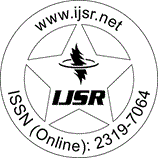Downloads: 139 | Views: 478
Research Paper | Electronics & Communication Engineering | India | Volume 6 Issue 4, April 2017 | Popularity: 6.6 / 10
Investigation of Optical Gain of Type-I and Type-II Nano Hetrostructure
Vinay Kumar Singh
Abstract: This paper deals the investigation of optical gain characteristics of a single quantum well of material composition InGa0.76N0.24 (Type-I) sanwitched between the barriers of material composition GaN. The structure is grown on GaN substrate and In0.53 Ga0.47As (Type_II) sanwitched between the barriers of material composition GaAs0.51Sb0.49. The structure is grown on InP substrate. Apart from optical gain, we have also investigate energy band structure along with valance and conduction band envelope functions and the comparative picture of the two hetrostructures (Type-I and Type-II) with in two polarization i. e Transverse electric (TE) and Transverse Magnetic (TM). The behavior of quasi Fermi levels for the valance and conduction band has also been investigated. For optical gain simulation, the hetrostructure has been modeled with the help of six band k. p method. The 66 diagonalized K. p Hamilton has been solved to evaluate the light and heavy hole energies. For the injected carrier density of 151012/cm2, the optimized optical gain is found ~ 30320.21/cm at wavelength 0.93 m and ~ 12327.21/cm at wavelength 1.85m for Type-I and Type-II hetrostructures respectively.
Keywords: Optical Gain, Type-I and Type-II, TE and TM mode, Hetrostructures
Edition: Volume 6 Issue 4, April 2017
Pages: 40 - 44
Make Sure to Disable the Pop-Up Blocker of Web Browser
